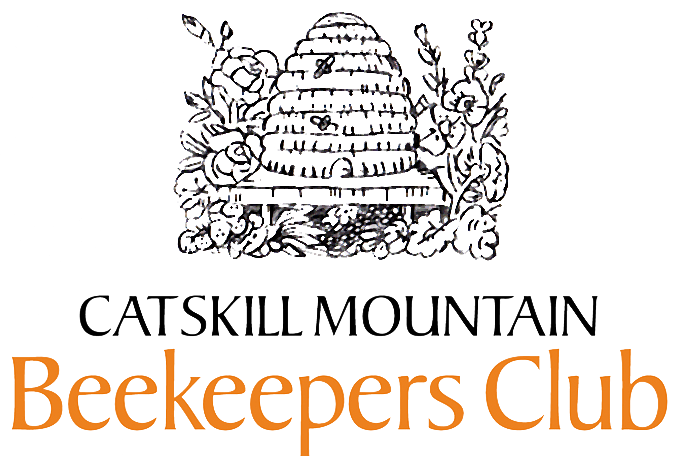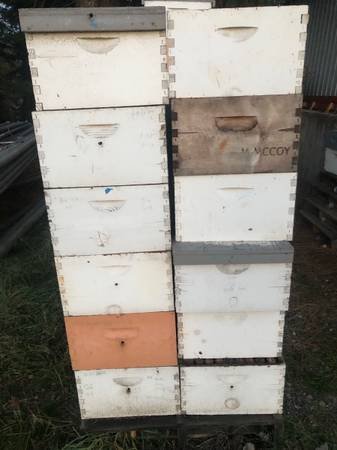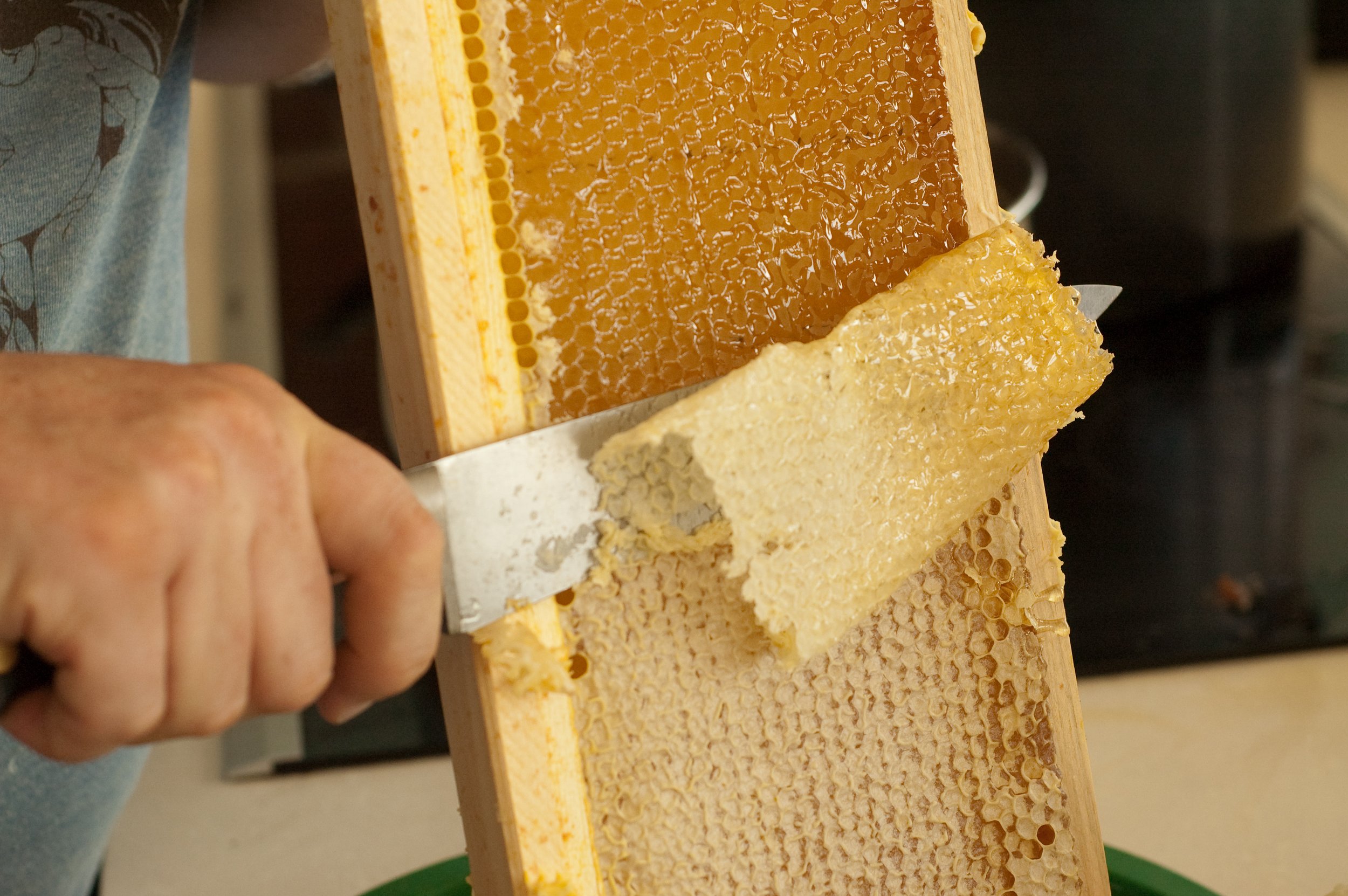Beekeeping Calendar
by Richard Ronconi and Dick Johnson
-
• Relax for a few days at least
• Check beeyard occasionally especially if windy.
• Make sure covers are on tight.
• Make sure lower entrance is clear if there is no upper entrance in your hive.
• On a warmish day you can inspect hives. Check on food supply.
• Repair any broken equipment. Paint bodies. Clean smoker, hive tools.
• Check stored equipment and frames. Make sure they are mouse proof
• Order packages if you intend to this year. Don't wait.
• Time to do some reading. Time to educate yourself on beekeeping.
-
• When any warm weather shows up, check out your hives. You can lift inner cover, or just knock on the front of the hive and see if you hear buzzing.
• If hive is dead this is a good time to take apart, clean out dead bees, clean up frames and store in mouse-proof place.
• Determine reason for loss. Sign of starvation is many bees with butts sticking out of cells. There may be honey in other parts of hive. Save to fortify other hives that might need it later.
• You may want to sprinkle a bit of granulated sugar around the oval hole in inner cover for insurance. It is too early in the Catskills to start feeding syrup.
• Order new packages.
• Work on a plan to keep better records than you did last year.
• Are you going to feed pollen patties? If so, read up to see which ones are the best. In fact read up on everything, you never know enough.
• If snow is deep make sure bees have an open exit.
• Weigh down outer covers with bricks so they don't blow off in wind
-
• Check hives for losses.
• Determine reason for loss.
• Remove dead hives from bee yard to prevent robbing.
• If disease was not a reason for loss, clean frames and store.
• Check out strong hives for possible later splits.
• Feed with sugar syrup, pollen patties, and/or honey to prevent late starvation.
• Begin treatments for nosema and varroa.
• Repair and paint broken or damaged equipment.
• Order new frames/foundation for old comb replacement.
• Check out electric fence, repair and turn on to welcome waking bears.
When you inspect your hive(s) and find dead outs this quick diagnosis may help. If the problem is still unclear, bring a sample to the next meeting and/or call one of our more experienced beekeepers.
Varroa: Look on the bottom board for a lot of dead Varroa mites along with the dead bees. If there are thousands of mites, it was probably Varroa.
Starvation: If the cluster was not in contact with any stores and there was a sub zero freeze, consider starvation. Look for dead bees headfirst in the cells and lack of stores on the center 3 or 4 frames.
Dwindling: If the hive went into winter with bees that are too old the hive can dwindle to where it can't manage really cold weather because the cluster wasn't big enough.
Tracheal Mites: A lot of crawling bees and not a tight cluster or dead bees scattered throughout the hive when it was cold enough that they should have clustered.
Nosema: If there is a lot of evidence of dysentery and the hive has died.
-
• Continue to feed bees sugar syrup or honey, pollen patties
• Check incoming field bees for pollen. Pollen should start coming in soon.
• Check nearby trees, willow, alder, maple
• Reverse brood chambers after weather warms up. (Reduces swarming)
• Get ready to make splits.
• Plan and get ready equipment to catch swarms.
• Replace old blackened comb. Old comb can harbor disease.
• Check for healthy brood pattern.
• Inspect any dead hives. Know reason for loss.
• Put away frames from dead hives to prevent robbing.
• Mouseproof any stored comb.
• Add varroa screens if you don't already have them.
• Once dandelions are in full swing test for varroa.
• Know your varroa levels so you can map out strategy.
-
• Be sure to keep feeding your new bees to provide necessary resources to build comb and raise brood. If you are using sugar syrup ratio is 1:1 sugar to water for spring feeding. Pollen patties are also helpful.
• Test over-wintered bees for varroa. If count is high you must treat or summer mite count will get out of hand.
• Install drone frames if you are using them for varroa mite management
• Be sure varroa screens are in place.
• If you are a new beekeeper, keep in touch with your mentor.
• Check for swarm cells. If you have any make a nuc. Be sure hives have plenty of room for brood and honey to avoid swarming. Add honey supers when needed.
• Catch a swarm if you can. Swarming is a natural way of increase. You will end up with a new hive and a good queen with good genes.
• Organize beekeeping equipment (smoker, hive tools, veil, etc.) for easy access in case you want to take a quick look on a sunny day after work. It is always good to have an extra hive tool. Hive tools seem to have a way of disappearing no matter what color they paint them. Some day I am going to borrow a metal detector and retrieve all the tools that I have lost buried in the bee yard.
-
• Introduce drone fames if you intend to use them for mite control.
• Add honey supers to avoid overcrowding and swarming.
• Do an ether roll mite count. Mite population will explode if it is already high.
• Clean up extracting equipment if you intend to extract during summer.
• Check your queens' vitality. Do you need to requeen? Is there any supersedure going on?
• Look for chalkbrood mummies. It seems to be getting more common especially during humid weather.
• While manipulating hive notice frames, comb or supers that need to be repaired, replaced and mark.
• Make sure new foundation added earlier is being drawn out.
-
• Keep track of drone frames if you use them. If you don't take them out on time you will end up with a varroa nursery. Not a good idea.
• Add honey supers as needed. Don't let hives get over full, a sure recipe for swarming. It is too late to encourage swarms.
• Check for swarm cells, particularly on strong hives.
• Use swarm cells to start nucs if you want and to relieve pressure in parent hive.
• Be sure to buy enough jars etc. if you extract during the summer.
• Check mite population, don't wait till the end of the summer, then it may be too late.
-
• Keep putting on those honey supers.
• Test for varroa or it will get out of control.
• Check electric fence. Bears will be fattening up soon for winter. That brood in your hives smells delicious and provides lots of protein for a hungry bear. Lightning can put your fence out of commission.
• Check hives for strength and presence of queens.
• Queenless or weak hives will not make it through the winter. This is a good time to requeen if necessary or combine weak hives with strong ones. Take your winter losses now on your own terms. Combining will make stronger hives to insure survival through long winter months.
-
Harvest honey crop. Be sure to leave at least 60 - 90lbs. for winter.
• Begin mite control.
• When weather gets chilly,install mouse guards.
• Check weight of hives.
• Get ready to feed, if necessary, after frost kills last flower.
• Get ready to winterize hives. Insulation, wrapping material, etc.
-
• Be sure you have left enough honey for the winter.
• Check weight of hives.
• Feed syrup or honey until bees stop taking it.
• Include Fumidil (or Funigillin) in syrup to combat nosema
• Mouse guard should be on already
• When temperatures dip get equipment ready for winterizing hives i.e. insulation, wrappings etc. Don't install too early since temperature may go up again this month.
• Be sure your hive has good ventilation. Place a small stick under the inner cover if you do not have other openings near top of hive. High humidity in your hives during the winter can be deadly.
• Stack your honey supers so that mice cannot get in and make nests.
• Store wax in airtight containers to keep out mice. Think about making candles, a good cold winter activity.
• Sell your honey, make this addiction pay for itself. You've got a pure natural product, don't sell cheap.
-
• Continue to feed hives syrup/honey until bees stop taking it.
• Think about insulating hives especially if you are in windy area.
• Check to make sure hives have adequate ventilation.
• It is the time to think about repairing damaged hive boxes and other equipment.
• If your honey is already in jars and granulates sell it that way. Make your customers aware of the fact that granulation is natural and shows that your honey has not been heated. It is raw honey unlike that commercial stuff.
• If this is your first honey year make a list of things you could do better next season. Lists of such things are important so you don't make same mistakes twice.
• It also helps you plan for the coming year.
• Make a commitment to attend all meetings of Catskill Mountain Beekeepers Club. There's a lot to learn. We have hundreds of years of experience to share. No beekeeper ever knows it all.
-
• Continue to feed hives syrup/honey until bees stop taking it.
• Think about insulating hives especially if you are in windy area.
• Check to make sure hives have adequate ventilation.
• It is the time to think about repairing damaged hive boxes and other equipment.
• If your honey is already in jars and granulates sell it that way. Make your customers aware of the fact that granulation is natural and shows that your honey has not been heated. It is raw honey unlike that commercial stuff.
• If this is your first honey year make a list of things you could do better next season. Lists of such things are important so you don't make same mistakes twice.
• It also helps you plan for the coming year.
• Make a commitment to attend all meetings of Catskill Mountain Beekeepers Club. There's a lot to learn. We have hundreds of years of experience to share. No beekeeper ever knows it all.




